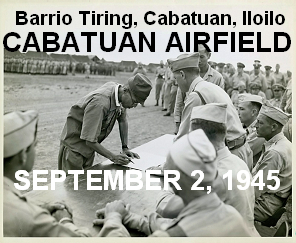
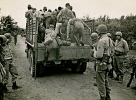

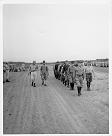


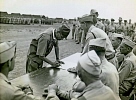
Col. Ryoichi Tozuka signs the surrender instrument
as Col. Raymond G. Stanton looks on.
Cabatuan Airfield
Barrio Tiring, Cabatuan, Iloilo
Panay Island, Philippines, September 2, 1945
|
|
- o -
|
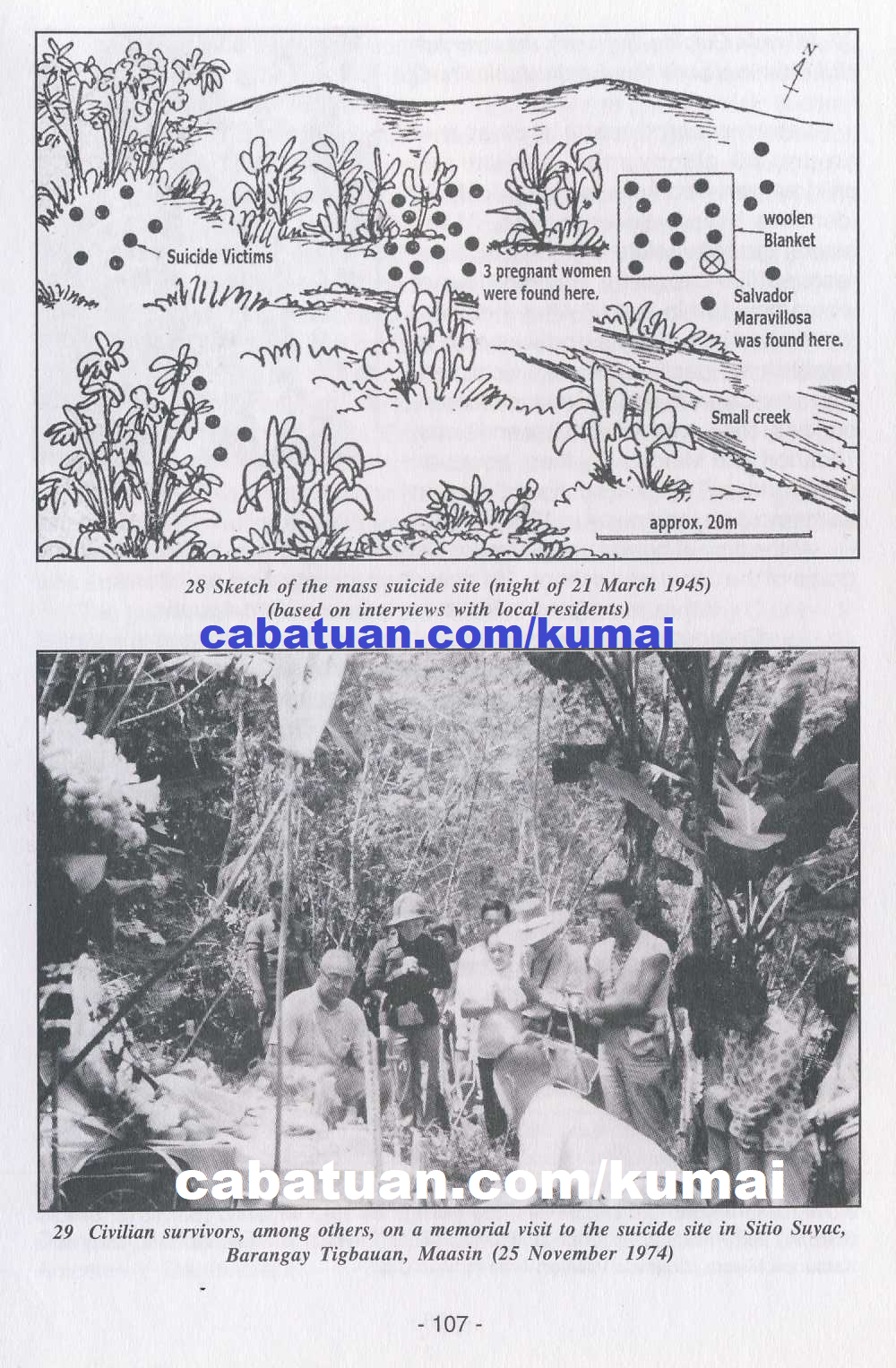
(top) Sketch of the mass suicide site (night of 21 March 1945), (based on interviews with local residents)
(bottom) Civilian survivors, among others, on a memorial visit to the suicide site in Sitio Suyac, Barangay Tigbauan, Maasin (25 November 1974)
Page 107
|
|
8.3 ‘Advance by Turning’: Mass Suicide of the Hôjin
As enemy planes kept flying low by day, we hid in the jungle and vigorously marched toward the west at night, guided by the compass and the Southern Cross. On March 20, while avoiding guerrilla soldiers and US forces whom we saw, we sought cover in the jungle three kilometers northwest of the town of San Miguel. At daybreak of the 21st, we went swiftly through the town of Alimodian. At the village of Cagay on the 22nd, we were fortunately able to make the prearranged contact with the Yoshioka Force from San Jose, Antique. We had sent them a radio message to abandon San Jose and move to Bocari. Throughout the night of the 23rd, we marched briskly, even as a number of soldiers with us kept dropping. We could not do anything but to scold and encourage them to keep on walking. Some soldiers had been injured in the break through the enemy line and could no longer move on; quite a number of them took their own lives.
Thus the dawn of March 24 came. With the sound of the roaring river and the mountains soaring all around us, we came upon the village of Bocari that lay beneath. It was a fresh morning. I surveyed the topography from the mountain above and then counted around 600 houses in the village, with water in the valley, fields of rice and other crops, it was the ideal layout for a position. Presumably, the whole unit would have enough to eat for half a year. We decided to make this our base. The total number of the soldiers assembled was around 700.
On the other hand, the Saitô forces, which had come to be separated from the main force, made a quick advance toward Pavia after engaging in a fierce combat. In the early morning of March 19, they had crossed the Jaro River behind the town hall of Pavia. They reached a coconut grove about half a kilometer northeast of the town where they stayed to wait for the rest of the group. Under the command of Captain Saitô then were 150 men of the machine-gun force, 130 of the Suzuki transport company, 180 the Noda company of the Tanabe unit, 50 of the Ika Hôjin company, 30 of the remaining 102nd Division Force, and 200 Hôjin women and children. However, patients of the Army Hospital and some soldier dropouts were also left behind. Captain Saitô dispatched a messenger squad to inform headquarters of their whereabouts; but upon meeting with enemy tanks, the squad returned without making contact.
Taking over command from the wounded Captain Saitô, 1st Lieutenant Yamamoto led the forces and the Hôjin. They left the spot around noon, and by around 1 p.m., they reached a coconut grove about a kilometer and a half north of Pavia where they rested until it was dark. They started again at 8 p.m., passing three to four kilometers north of the town of Santa Barbara, and reached the heavily wooded area of Barrio Buyo, four kilometers east of the town of Cabatuan. They hid there the next day and resumed their movement at night. On the way, they frequently had to cross a road used by US military trucks. Around 5 a.m. of March 21, they entered a mountainous area of Suyac of Barrio Tigbauan Road, part of Maasin, and about four and a half kilometers southwest of the town of Janiuay. It was in this forested mountainside with a river running below where they decided to take a rest until it was dark once more.
Using a straight line, the distance of Suyac from Pavia was only 25 kilometers. However, it seemed longer then since it was difficult and dangerous to move at night. The elderly Hôjin men, women and children were physically and mentally exhausted. In the beginning, they each had large packs on their backs full of necessities and carried other possessions in both hands. Some even had children with them. In time, they were tired and dragged themselves as they trailed after the soldiers’ lead. Some soldiers helped carry the children or their bags. Gradually, though, the bags were left behind. Since some soldiers were still tense from their skirmishes, they warned the Hôjin, ‘Do not let the children cry. Their sounds will tell the enemy where we are. What are the parents doing?’ ‘Kill the child!’ When children started crying, therefore, their mothers scolded them like mad. Some desperately covered the children’s mouths with their hands to suppress the noise. In this overwrought atmosphere, Kichisaburo Maruyama of the Iloilo Consulate strove to protect the Hôjin by mediating between them and the soldiers.
|
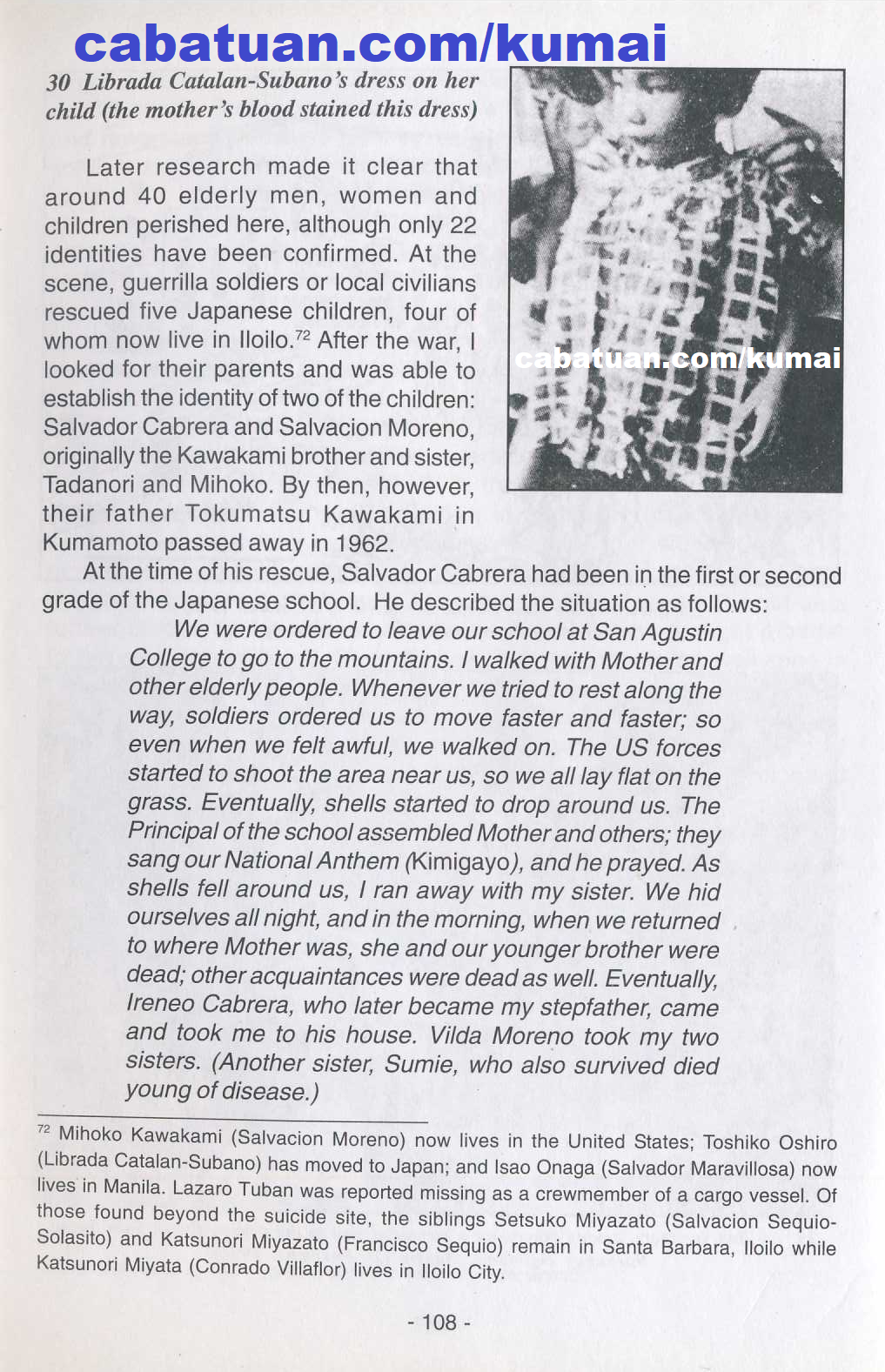
Librada Catalan-Subano's dress on her child (the mother's blood stained this dress). Page 108.
|
|
The net of the guerrilla siege was gradually closing in. In addition, at around 5:00 p.m., the US artillery started a rigorous bombardment of the area from nearby Maasin. With the explosions, the assembled Japanese fell into disarray. The Hôjin, in particular, had lost whatever spirit and energy they had left. Sometime later that night of the 21st, around 40 Hôjin got together. The principal of the Iloilo Japanese School Kayamori spoke out what was in his mind, ‘I feel that we should not be a further burden to the soldiers. Let us die here.’ Others thought it better to live even if humiliated. Nevertheless, they sang their farewell song in unison – Umi Yukaba (If I Go to Sea) – and bowed in the direction of the Imperial Palace. Some killed themselves with pistols and hand grenades.
Failing to kill themselves, some mothers in agony sought the help of passing straggling and wounded soldiers who used bayonets or hand grenades. Some of those soldiers finally caught up with the Saitô force and told the others of the mass suicide (jiketsu). The news spread among the soldiers and finally reached Captain Saitô. He was shocked; he ordered Corporal Katsuyoshi Yamaguchi of the headquarters wire communications unit and several other soldiers to confirm the news of the Hôjin suicides. Corporal Yamaguchi and others dared to go back through guerrilla lines and reached the place of the mass suicides at Suyac in the early morning of the 23rd. They found and identified the bodies of Principal Kayamori, who had a pistol shot on his right temple, and many corpses of those who had killed themselves. However, as guerrillas started to attack, they had to leave without being able to collect the remains.
Later research made it clear that around 40 elderly men, women and children perished here, although only 22 identities have been confirmed. At the scene, guerrilla soldiers or local civilians rescued five Japanese children, four of whom now live in Iloilo. After the war, I looked for their parents and was able to establish the identity of two of the children: Salvador Cabrera and Salvacion Moreno, originally the Kawakami brother and sister, Tadanori and Mihoko. By then, however, their father Tokumatsu Kawakami in Kumamoto passed away in 1962.
At the time of his rescue, Salvador Cabrera had been in the first or second grade of the Japanese school. He described the situation as follows:
We were ordered to leave our school at San Agustin College to go to the mountains. I walked with Mother and other elderly people. Whenever we tried to rest along the way, soldiers ordered us to move faster and faster; so even when we felt awful, we walked on. The US forces started to shoot the area near us, so we all lay flat on the grass. Eventually, shells started to drop around us. The Principal of the school assembled Mother and others; they sang our National Anthem (Kimigayo), and he prayed. As shells fell around us, I ran away with my sister. We hid ourselves all night, and in the morning, when we returned to where Mother was, she and our younger brother were dead; other acquaintances were dead as well. Eventually , Ireneo Cabrera, who later became my stepfather, came and took me to his house. Vilda Moreno took my two sisters. (Another sister, Sumie, who also survived died young of disease.)
There were ten Taiwanese comfort women among the Hôjin in this life or death escape. Along the way, the Hôjin disliked and discriminated against them. Even during the short rest periods, mothers sought to prevent their children from coming close to them. Since they could not stand the prejudice, the comfort women disguised themselves as men. With shaven heads, they made up a group of their own and chased after the soldiers. Fortunately, they were young and healthy so all of them were able to escape into the mountains.
More tragic was the fate of the 250 patients of the Army Hospital led by Army doctor Captain Tanaka. Most of them were in serious condition. They could not move quickly and, thus, lost contact with both the forces of the headquarters and that of Sait6. These stragglers met US tanks on the way and were killed without a fight. Dr. Tanaka and the main Hospital unit were hiding in a sandbar of the river between the village of Buyo and the town of Pavia when guerrilla forces surrounded and killed them by mortar shells. Only a few medics who had pushed their way through the siege managed to reach Bocari to tell the story.
Guerrilla forces ambushed the Kawano Company of the Tigbauan garrison when it was just making it into the mountains. The main company force perished in the fierce battle and only the forward detachment of Sergeant Kashiwamura was able to break through enemy lines.
|
The guerrilla unit that attacked the Kawano force was Company C of the 1st Battalion of the 65th Regiment led by Captain Orlando P. Flores. They captured the light machine guns and rifles of the Kawano Company that are now exhibited at Museo Iloilo. Some other weapons were presented as souvenirs to General Peralta.
The 1st company of the Fukutome force and others related to the Cabatuan airfield garrison were able to make their way through US and guerrilla lines and reached the mountains where they joined the Saitô force.
What happened to the airfield construction unit of Cabatuan was dreadful. As they had long been under guerrilla siege, most soldiers were suffering from serious cases of beriberi. Although they emerged from their positions, they were unable to walk. Realizing that it was the end for them, they killed themselves one after another, aiming the rifle muzzles into their mouths or using hand grenades. The surrounding guerrillas watched, cursing in Japanese, ‘Kill yourself, thieves,’ while laughing at them.
On the other hand, the Toyota platoon at Cordova amazingly forced its way through and joined the main force at Bocari. The 4th Company Yoshioka force and the Antique airfield unit led by 1st Lieutenant Ishida abandoned San Jose on March 31. Crossing enemy lines, they arrived at Bocari on April 10. The day before they left, they executed three captured US pilots. This deed led to the commander’s being tried as a war criminal after the war. They also set a time bomb just before they left. When it exploded, it killed soldiers of a platoon of Company A of the 6th Regiment, including the company commander, Captain Anicetas V. Daguinotan.
|
|